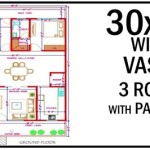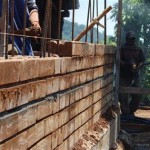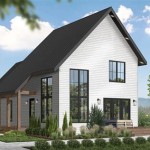Timber House Planning Permission: A Comprehensive Guide
Building a timber house can be an exciting and rewarding endeavor, offering a sustainable and stylish alternative to traditional construction methods. However, before you embark on this journey, securing planning permission is a crucial step. This article will provide you with a comprehensive guide on navigating the planning process, ensuring a smooth and successful outcome. ### 1. Understanding Planning Permission Planning permission is the authorization granted by a local planning authority to carry out development on a piece of land. It ensures that new developments adhere to specific regulations and guidelines, such as zoning restrictions, building codes, and environmental considerations. ### 2. Determining if You Need Planning Permission In most cases, constructing a timber house will require planning permission. However, there are certain exceptions to this rule. For example, if your timber house is considered a "permitted development," you may be exempt from obtaining planning permission. Permitted developments typically include minor additions or alterations to existing structures, such as conservatories, garages, or extensions. To determine whether your timber house project falls under permitted development, you should consult with your local planning authority or check their website for more information. ### 3. Preparing Your Planning Application Once you have determined that you need planning permission, you must submit a planning application to your local planning authority. This application will typically include the following information: * A detailed description of your proposed timber house project * Plans and drawings of your timber house, including elevations, floor plans, and sections * A statement explaining why you believe your timber house project should be approved * Any supporting documents, such as environmental impact assessments or heritage statements ### 4. Submitting Your Planning Application Once you have compiled all the necessary information, you can submit your planning application to your local planning authority. The application process can vary from one authority to another, so it's essential to check their specific requirements. Typically, you will need to pay a fee to submit your planning application. This fee can range from a few hundred to several thousand dollars, depending on the size and complexity of your project. ### 5. The Planning Process After you submit your planning application, it will be reviewed by your local planning authority. This review process can take several weeks or even months, depending on the complexity of your project and the workload of the planning authority. During this time, the planning authority will consider several factors, including: * The impact of your timber house project on the surrounding environment * The compatibility of your timber house project with the local planning policies * The design and appearance of your timber house ### 6. The Decision Once the planning authority has completed its review, it will issue a decision on your planning application. This decision can be either: * Approval: Your planning application is approved, and you can proceed with your timber house project. * Refusal: Your planning application is refused, and you cannot proceed with your timber house project. * Conditional approval: Your planning application is approved, subject to certain conditions. These conditions may include changes to the design of your timber house or additional environmental measures. ### 7. Appealing a Planning Decision If your planning application is refused, you can appeal the decision to the Planning Inspectorate. The Planning Inspectorate is an independent body that reviews planning decisions made by local planning authorities. The appeal process can be complex and time-consuming, so it's essential to seek legal advice before proceeding. ### 8. Building Your Timber House Once you have obtained planning permission, you can begin constructing your timber house. It's important to ensure that you comply with all the conditions of your planning permission during construction. Failure to comply with your planning permission could result in enforcement action being taken against you by your local planning authority. This could include being ordered to stop construction or even demolish your timber house. ### Conclusion Securing planning permission for your timber house project is a crucial step in the construction process. By following the steps outlined in this guide and working closely with your local planning authority, you can increase the chances of your planning application being approved. Remember, planning permission is not just a legal requirement; it's also an opportunity to ensure that your timber house is built in a way that is sustainable, environmentally friendly, and compatible with the local community.
How To Get Planning Permission For An Off Grid Self Build Home

Planning Permission South West Log Cabins

Planning Permission For Timber Frame Extensions Hardwoods Group

Planning Permission South West Log Cabins

Do I Need Planning Permission Custom Log Cabins And Summerhouses

Can I Live In A Log Cabin Permanently Loghousecabins Co

Planning Permission For Log Cabins Yes Timber Living

Planning Permission For Log Cabinstuin Blog

Planning Permission South West Log Cabins

Building Regulations For A Timber Frame Extension G Kerr Carpentry








